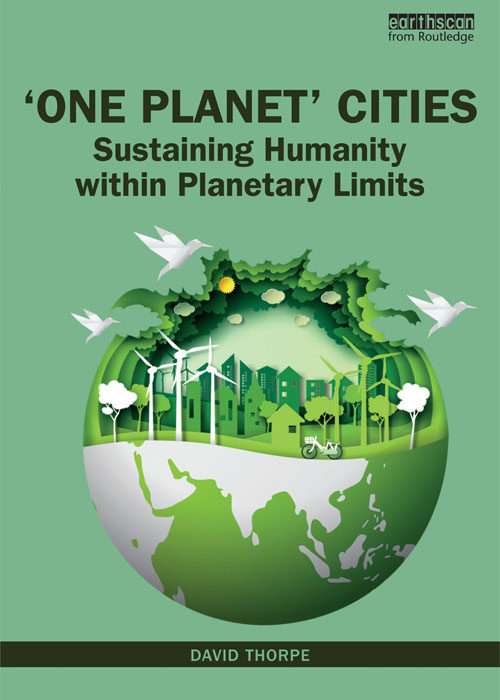With four out of five people predicted to be urban dwellers by 2080, a new book titled “One Planet” Cities proposes a pathway to genuine sustainability for cities and neighborhoods, using an approach based on “contraction and convergence”.
Via interviews with key players, including the Global Footprint Network, World Future Council, WWF, mayors and officials, and case studies from across the globe, including Europe, North and South America, Australia, Sweden, South Africa, China, and India, David Thorpe examines all aspects of modern society from food provision to neighbourhood design, via industry, the circular economy, energy and transport through the critical lens of the ecological footprint and relevant supporting international standards and indicators.
The 6-step path towards One Planet a city:
- Obtain community buy-in and awareness-raising.
- Decide which standards and goals to use.
- Determine the baseline – the current situation of biocapacity and resource use.
- Set targets to ratchet down consumption and boost biocapacity for each sector over realistic timescales (e.g. 5-year intervals up to 2030 then 2050).
- Set in place ways to measure them.
- Keep checking and refining.
The basic ‘One Planet’ a city requirements:
- An aim to reduce the ecological footprint to ‘one planet’ by (say, 2050) would become an underlying principle of all planning and policy as a verifiable regenerative strategy.
- That the same set of social and environmental criteria should be used to assess all planning applications and procurements (i.e. a reduction of ecological footprint and increase in biocapacity, step-changing incrementally over time to the level currently applied to One Planet Developments in the open countryside under TAN6).
- The criteria should be informed by appropriate indicators including lifecycle and ecological footprint analysis, using the simple NPV+ tool which allows you to compare all potential and actual projects for their impacts and benefits.
- Official policy would support all areas and sectors to become more productive and more biodiverse – regenerative. E.g. supporting more food growing in the city.
- Reduction of excessive consumption by a shift to a closed loop economy using procurement tools and believing that meeting basic needs is sufficient for everybody.
Recommendations on managing supply chains and impacts, how the transition to a world within limits might be financed, and a deep examination of the Welsh Government’s pioneering efforts follow. It concludes with an imagined vision of what a genuinely sustainable future might be like, and an appeal for “one planeteers” everywhere to step up to the challenge.
This book will be of great interest to practitioners and policymakers involved in governance, administration, urban environments and sustainability, alongside students of the built environment, urban planning, environmental policy and energy.
See “One Planet” Cities: Sustaining Humanity within Planetary Limits website.

